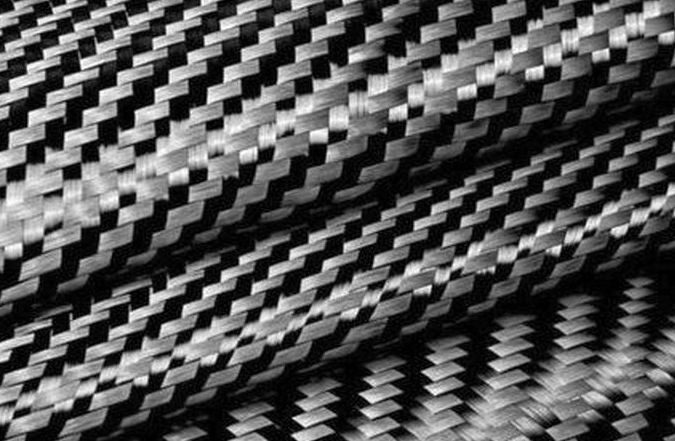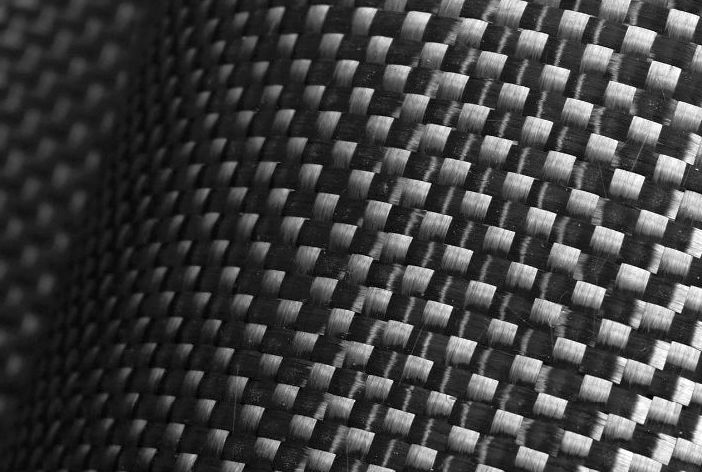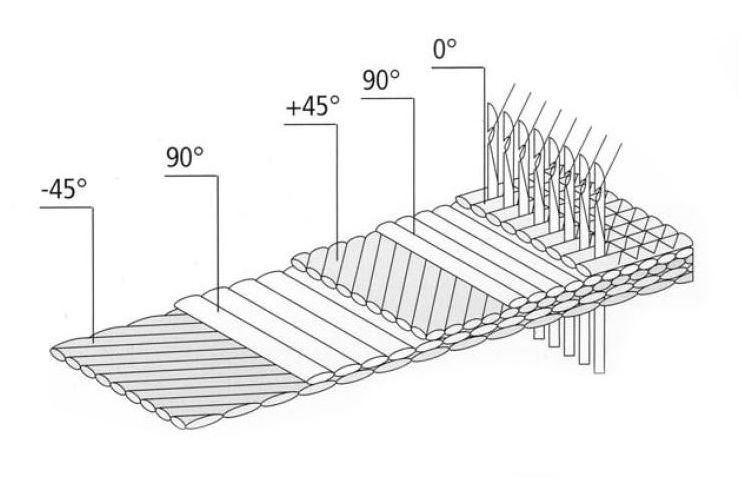Basic knowledge about carbon / CFRP basics
What is the difference between carbon, CFRP and carbon fiber?
CFRP = carbon fiber reinforced plastic. When only carbon is mentioned, this is just an abbreviation of the term carbon fiber reinforced plastic.
How is carbon made?
Carbonization refers to the manufacturing process or the pyrolysis of carbon fibers from carbon. The starting material is heated to temperatures of up to 1300°C in order to achieve the arrangement of the molecules into a chain (filament) and ultimately the carbon fiber under different pressure conditions. A single carbon filament is only 5-8 microns in diameter.
What is a roving and what do the numbers 1K, 3k or even 24K mean?
Roving is the arrangement of the individual carbon fiber filaments into a strand. A carbon fiber roving is a type of yarn that consists of many individual carbon fiber filaments. The number of filaments is given in K, which stands for thousands of kilos. For example, a 1K roving contains 1,000 filaments, a 3K = 3,000 filaments and a 24K roving 24,000 filaments.
What is carbon fabric or carbon fiber fabric?
Carbon fabric is the name given to the carbon fibers processed on a weaving machine into a finished fabric or cloth. Depending on the type of weave, different patterns or designs can be shown here. The fabric types canvas or 2/2 twill are mainly used in carbon fiber processing. Many other weaving patterns are possible, but here a few 100m² must first be produced.

What is plain weave and twill 2/2 weave?
Plain weave or twill weave describes the type of weave and ultimately the design that the carbon components will later have.

Twill weave 2/2
In twill weave, the fibers run at an angle of 0° / 90° to one another. Due to the special 2/2 weave, the fibers appear to be sloping at an angle of ±45°, although the fibers run lengthwise and crosswise to the axis of the pipe. We use this design for tubes from the Power Tube series (wall thickness 5mm) and the Telescopic Tube series (wall thickness 2.5mm). Our carbon plates and carbon angles are also made with this type of fabric, which means that they can be combined very well due to the same design.
Plain weave
In a carbon fabric with a plain weave, the fibers run at an angle of 0°/ 90° to each other. Due to the 1/1 weave, the fibers are exactly perpendicular to each other. When using this fabric for the production of CFRP pipes, the fibers run in the longitudinal and transverse direction to the axis of the pipe. This increases the ratio of flexural rigidity to compressive strength and is used by us for different wall thicknesses, including 0.5mm, 0.75mm, 1mm, 1.5mm, 2mm and 3mm. The exact weaving of the fibers allows a very fine fabric look to be created, which means that the carbon products have an elegant carbon design.

What is the difference between unidirectional = UD, bidirectional, triaxial, quadraxial and quasi-isotropic?
These designations describe the fiber structure in the corresponding laminate
Unidirectional - all fibers laid in only one direction
Bidirectional – the fibers are placed in 2 directions at 0° and 90° to each other (or ±45°)
Triaxial – the fibers are laid at 3 different angles, mostly 0° and +45° / -45°
Quadraxial – the fibers are laid alternately in directions 0° / 90° / +45° / -45° (=135°).
Quasi-isotropic – in a quasi-isotropic laminate, the fibers are laid in at least 4 different directions and with a symmetrical layer structure to the central axis.
The fiber structure ultimately determines the mechanical properties of the manufactured component. A tube that is significantly subjected to bending loads has a high fiber content in the longitudinal direction 0°, whereas a torsional wave mainly consists of the fiber angles +45° and -45°. The variable combination of fiber types and fiber angles allows individual components to be created exactly according to your requirements.
What are high modulus carbon fibers - are there different carbon fibers or what is the difference between HT, IM, HM or UHM fibers?
There are a multitude of different carbon fiber types, which of course also have different technical properties. In principle, carbon fibers are classified according to their strength and divided into corresponding groups:
HT – High Tenacity = high-performance carbon fibers (examples HTA, HTS)
IM – Intermediate Modulus = higher stiffness with increased tensile strength
HM – High Modulus = high modulus fibers for enormous rigidity
UHM - Ultra High Modulus - Ultra high modulus fiber for applications with superior performance to the final component
What is epoxy?
Epoxy resin, also known colloquially as epoxy, is a plastic matrix in which carbon fibers are embedded to form a composite component. When processing carbon fibers into carbon fiber reinforced plastic, the following matrix systems have proven themselves: epoxy, polyester, vinyl ester, phenol or cyanate ester. If carbon fibers with a plastic matrix are processed into a semi-finished product such as a plate or tube, this is also referred to as a composite component or laminate.
